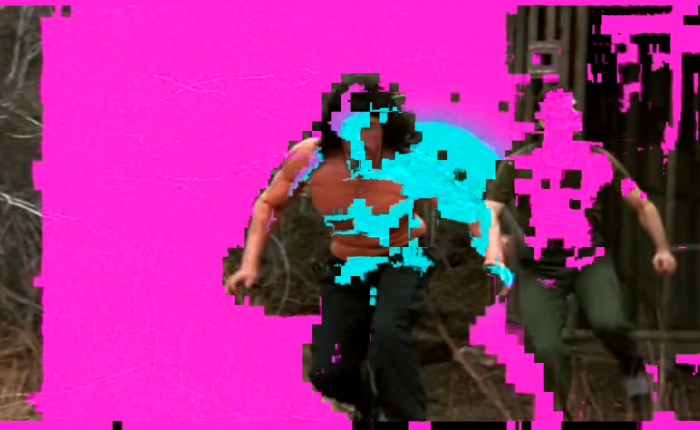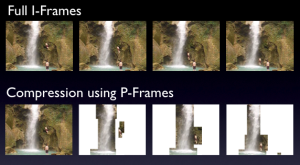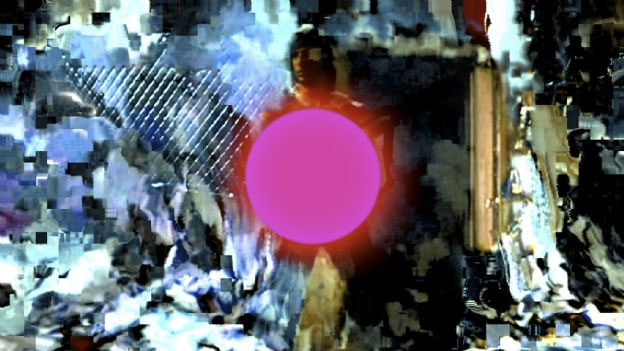I was heavily influenced by Takeshi Murata and Jeremy Blake’s work when creating nature.parentNode. It is a digital work that uses the technique of datamoshing to combine video and images in a destructive aesthetic. Photographs of ice and snow are superimposed on a woman who slowly emerges into view. The images accompany a recitation of Robert Frost’s poem, Stopping by Woods on a Snowy Evening. The piece provokes a feeling of solemnity through the combination of audio and video.
The technique of datamoshing was a way for me to meld the two images together. In this case, the second video of the figure becomes a part of nature. As the figure moves and bend to speak, the nature follows as one.
Jeremy Blake’s work contained a narrative that could be followed. His work also had a nostalgia that came through with his technique and subject matter. The recitation of the poem by Robert Frost combined with the audio track added a narrative to this piece. It gives the video a timeline in which the audience can follow. Viewers are led through this short story to leave them with a feeling of something warm, familiar, and slightly disturbing.





